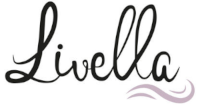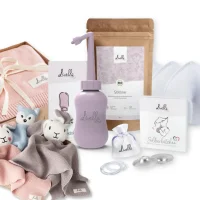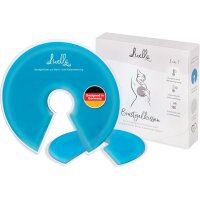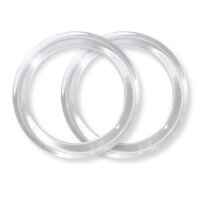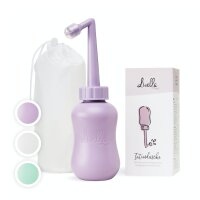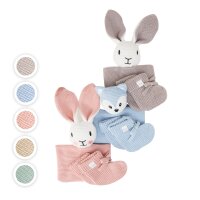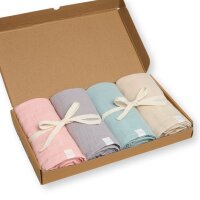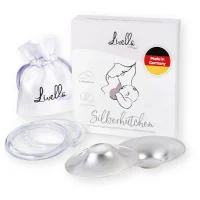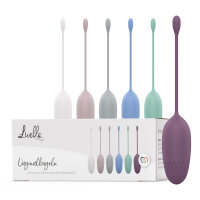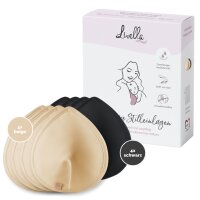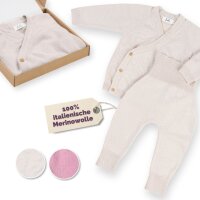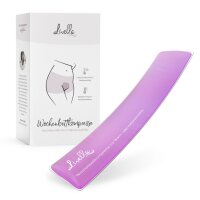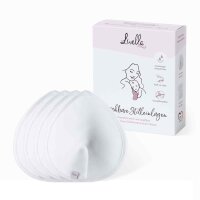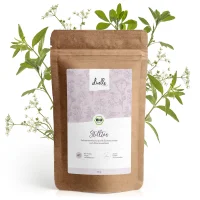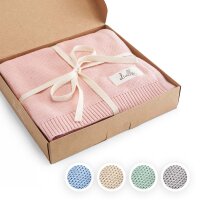Sore nipples are a common breastfeeding problem—especially during the first few days and weeks after birth. Already during pregnancy, the mother’s nipples can become sensitive and irritated, and with the start of breastfeeding, the discomfort usually worsens since the nipples first have to adapt to the baby’s strong suck.
Without treatment, breastfeeding with sore or cracked nipples can become very painful. There’s hardly enough time between feedings for the skin to heal. Depending on the intensity of the pain they experience, it’s not uncommon for breastfeeding mums to consider weaning their child because they can’t handle the pain.
But are sore nipples really a reason for premature weaning? What exactly causes nipples to become sore from nursing? And how to soothe sore nipples from breastfeeding? Read on as we explain everything you need to know about possible remedies, causes and prevention of nipple soreness.
Table of Contents
Causes for sore nipples while breastfeeding
How to prevent sore nipples from breastfeeding?
How to treat sore nipples from breastfeeding?
How long will nipples be sore from breastfeeding?
Sore nipples from breastfeeding: When to get professional help?
Breastfeeding with sore nipples - yes or no?
Conclusion: Prevent sore nipples right from the start
Causes for sore nipples while breastfeeding
Sore nipples can have many different causes. The most common reasons why nipples become sore and painful while breastfeeding include:
- Incorrect positioning and attachment: Especially during the first weeks of breastfeeding, many mothers struggle to position their little one correctly, which often leads to poor latch. This means that the baby can’t grasp the breast properly and almost exclusively pulls on the nipple while sucking. Incorrect attachment is one of the main causes for sore breastfeeding nipples.
- Teething: As soon as your baby starts teething, breastfeeding usually becomes painful. During this time, nipples often become very sore and can even show small cracks due to the friction against your baby’s teeth.
- Flat or inverted nipples: Flat or inverted nipples make it difficult for your baby to latch on properly. This increases the strain on the nipples over time which then become sore. Insufficient milk flow: If there isn’t enough milk available or if the milk only flows slowly, your baby usually sucks harder, which can lead to discomfort—especially when your nipples are already sore.
- Incorrect sucking patterns and technique: The use of dummies or bottles for feeding can have a negative impact on your baby’s sucking technique and patterns. Especially when introduced in the first few weeks, soothers or bottles can lead to wrong positioning of the tongue during breastfeeding, which prevents deep latch and can cause sore nipples.
- Breast engorgement: Overly full breasts make it hard for your baby to grasp it and latch on properly. The nipple is then no longer positioned deep in your baby’s mouth, but is instead compressed between his or her jaws, which leads to soreness.
- Tongue-tie: A tongue-tie (also known as ankyloglossia) describes an anatomical condition where a baby’s tongue movement is restricted due to a shortened frenulum. If the tongue is tied, the baby can’t latch on properly which, in turn, can lead to sore nipples when breastfeeding.
- Thrush: If your nipples are constantly sore and irritated despite good latch and positioning, you could suffer from a bacterial infection of the breast tissue. Thrush is a common yeast infection of the nipple that can cause soreness and pain.

How to prevent sore nipples from breastfeeding?
There are many different causes that can lead to sore nipples during breastfeeding—sometimes several causes can contribute to nipple soreness at the same time. Although it’s hard to avoid sore nipples that are the result of a short frenulum, trivial causes for nipple pain can be prevented quite easily.
Here are some aspects to keep in mind:
- Maintain good hygiene: Make sure to wash your hands before breastfeeding to avoid spreading germs and bacteria across your breasts and nipples. It’s also recommended to wash your breasts and nipples regularly with warm water and a mild soap—especially after feeding to wash off any residue of your baby’s saliva.
- Break the suction: In the first few weeks of breastfeeding, many mothers forget to break the suction before removing their baby from the breast. This can damage the breast tissue and puts additional strain on the nipple.
- Enough sleep: Getting enough sleep is vital to support the different healing and regeneration processes in the body. Plus, it strengthens the immune system. Try to rest as often as possible between two consecutive breastfeeding sessions so that sore nipples from breastfeeding can heal faster.
- Don’t wait too long before the next feeding: If you wait until your baby is ravenous before the next feeding, he or she will probably be very greedy and breastfeed very frantically. To avoid this, it’s best to initiate the next breastfeeding session early so that your little one is still relaxed and can drink steadily.
- Stimulate your let-down reflex: If you notice that your milk flows very slowly every time you breastfeed, causing your baby to suck longer and harder, you can stimulate your let-down reflex before breastfeeding. This can be done either by massaging your breast or by gently squeezing it with your hand. Applying hot breast compresses like our Livella breast gel pads can also help stimulate your milk flow.
- Switch between different breastfeeding positions: Always using the same position for breastfeeding may be the easiest option, but it won’t help prevent sore nipples. Never changing position means that it’s always the same area of the breast that is under strain during feeding. Switching breastfeeding holds regularly can prevent this by varying the positioning of your baby’s mouth on your breast.
- Wear loose clothing: Wearing loose-fitting clothes prevents the fabric from rubbing against the nipples. This way you can avoid additional friction and give your nipples some rest between feedings.
How to treat sore nipples from breastfeeding?
“Prevention is the best therapy”, this saying definitely applies to sore nipples as well. But since there are so many different causes for nipple pain, preventing all of them is pretty much impossible. And once your nipples are sore, it’s crucial to act fast and treat them before they crack open and start bleeding.
But how to relieve sore nipples when breastfeeding? And what is the fastest way to heal sore nipples? Here are a few tips and tricks to help you get some much needed relief.
- Switch breasts while breastfeeding: If you only suffer from nipple pain on one side, you should start breastfeeding with the other breast. If both nipples are affected, start with the less painful side and only switch sides when the let-down reflex has kicked in and then focus on relaxing during latch-on.
- Change nursing pads frequently: If you use nursing pads, make sure to change them regularly. Clean, dry nursing pads cause less friction and leave less room for bacteria to reproduce. As an alternative to disposable pads, you can switch to washable nursing pads, like the ones you can find in our Livella shop.
- Apply drop of breast milk onto your nipples: Human milk has healing and antibacterial properties that can help relieve nipple soreness. It contains many important nutrients, which makes it a good care product for irritated skin. Express a few drops of breast milk and carefully apply them onto the area around the nipples after each feed.
- Use silver nursing cups: Silver nursing cups are practical little helpers for breastfeeding mums. They are worn between breastfeeding sessions and protect the nipples from unpleasant friction against the nursing bra or other clothing items. At the same time, they promote moist wound healing, as they form a physical barrier that allows drops of breast milk to accumulate around the areola. Ideally, the nursing cups should be made of pure 999 silver like our Livella Silver Nursing Cups to leverage the natural healing properties of the material.
- Consider low-level laser therapy: Low-level laser therapy is one of the latest additions to the range of sore nipple treatments when breastfeeding. During laser therapy, the damaged tissue is treated with electromagnetic light, which boosts cell metabolism and thus speeds up the wound healing process. Clinical trials show that low-level laser therapy can indeed be effective for providing pain relief for sore nipples from breastfeeding.
- Apply tea bags to sore nipples: There are studies showing that the application of tea bags in the form of home-made compresses can help relieve nipple soreness.
- Ointments and creams: Many publications you can find online recommend applying ointments and creams to sensitive nipples between feedings. However, be aware that many of these products contain ingredients that absolutely mustn’t be consumed by your baby. Nipple ointments should therefore be washed off before breastfeeding to remove any residue—especially when using ointments that contain paraffin.
- Ask your doctor for pain relievers: If you’re in constant, excruciating pain or even suffer from a bacterial infection of your breast tissue, your doctor can prescribe antibiotics that are compatible with breastfeeding. Painkillers can also provide temporary relief.
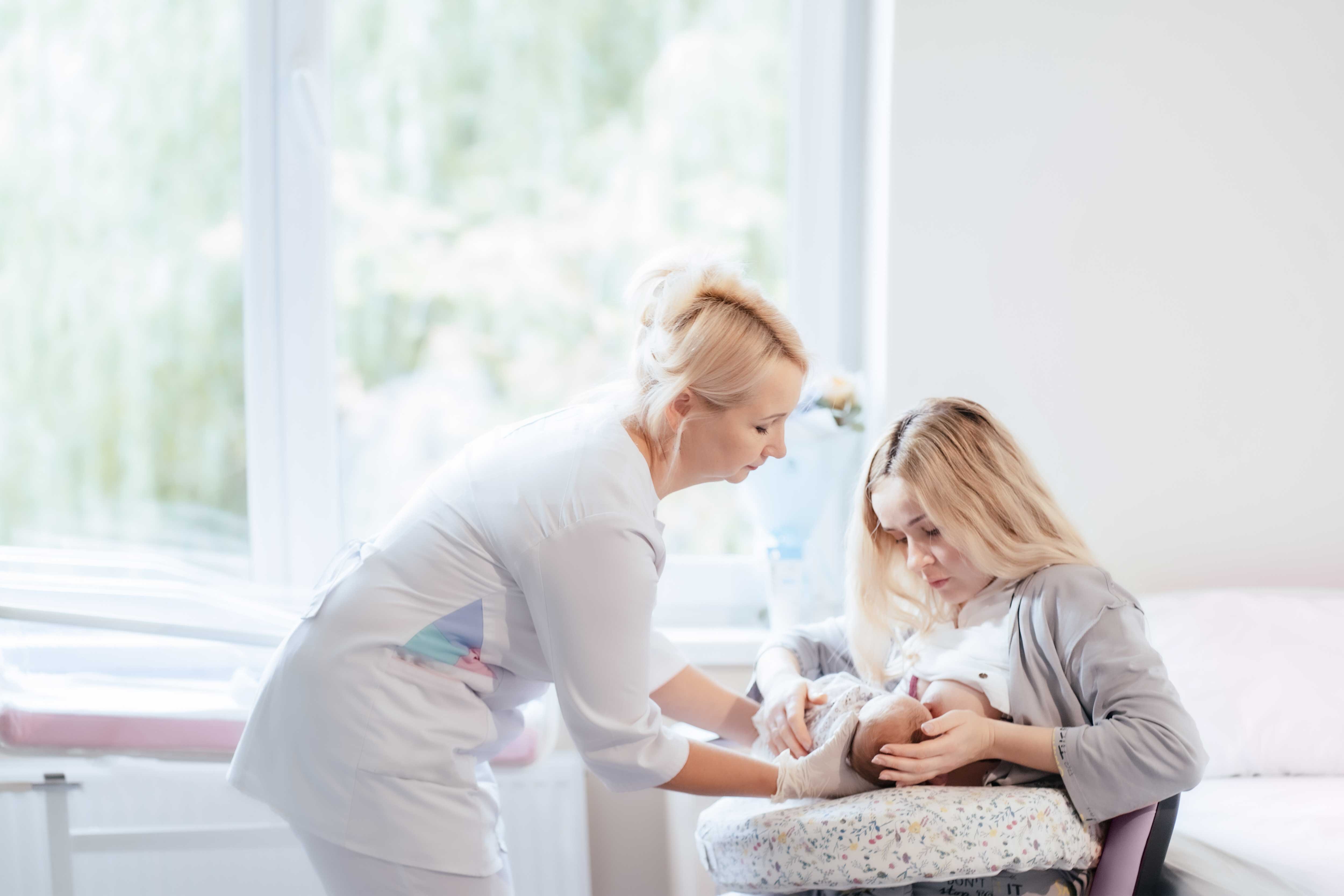
How long will nipples be sore from breastfeeding?
Breastfeeding with sore nipples is not a pleasant experience, and many women wonder how long it will take for the nipple pain to ease off. Unfortunately, there is no clear-cut answer to this question, since it largely depends on what causes the pain and what is done to treat it. The severity of the nipple lesion and your overall state of health are also factors to consider.
With the right treatment, sore nipples that are not cracked should heal within a few days. The same goes for nipple soreness that typically occurs in the first few days after birth as the breast tissue gradually adjusts to the new strain that is breastfeeding.
Sore nipples from breastfeeding: When to get professional help?
Sore nipples are a common struggle among breastfeeding mums, often to the point where they become the reason for early weaning. Therefore, you should get help early if the treatment tips listed above don’t provide any relief. At the very latest, you should seek professional help when you experience excruciating pain or show additional symptoms such as fever or exhaustion.
When it comes to breastfeeding problems such as sore nipples, your midwife or a lactation consultant are usually the ones to turn to. They can check if your baby is positioned correctly and latches on properly when feeding and can provide many helpful tips on what else to do to support the healing process. In case of a nipple infection, on the other hand, you should see a doctor to discuss appropriate treatment. Doctors can also run additional tests and exams to determine any underlying medical conditions that might contribute towards nipple pain.
Here you can find more information on professional breastfeeding support.
Breastfeeding with sore nipples - yes or no?
As mentioned earlier, it’s not uncommon for mothers to stop breastfeeding due to the pain they experience during latch-on and feeding due to sore nipples. But should you stop breastfeeding if your nipples are sore?
First things first, it’s rarely necessary to stop breastfeeding due to nipple soreness. On the contrary, most publications state that it’s important to keep breastfeeding despite your nipples being sore. Even if your nipples are bleeding, you can usually continue breastfeeding—provided the pain is bearable.
The reasons for this are numerous. For one thing, stopping to breastfeed might have a negative impact on breast milk supply. And for another, the many advantages of breastfeeding make it the method of choice when it comes to nurturing your baby, which is why breastfeeding should be continued for as long as possible—for up to two years and beyond when following the official recommendations of the WHO.
If you suffer from excruciating pain and severe lesions of the nipple tissue, taking a break from breastfeeding for a couple of days can be helpful. During this time, however, you’ll have to express your milk manually or with the help of a breast pump.
Conclusion: Prevent sore nipples right from the start
Many mothers struggle with painful and sore nipples, especially in the early stages of breastfeeding. Proper positioning and good latch are the most important preventive measures to stop nipple soreness from becoming a severe problem that might put the breastfeeding relationship in danger.
With the professional support of a midwife or a lactation consultant, breastfeeding problems such as painful nipples can usually be treated at an early stage. But even if your nipples are already sore and painful, this doesn't mean you have to stop breastfeeding your baby.
There are many different remedies that can soothe painful nipples between feedings and help the breast tissue heal quicker. These include the application of tea bags, the use of breast milk and its natural healing properties, and little practical accessories such as silver nursing cups which you can place on your nipples between feeding sessions.
Sources used
- Nipple Pain - La Leche League GB
- Breastfeeding with Sore Nipples - La Leche League International (llli.org)
- Your Guide to Breastfeeding (uncfsu.edu)
- Sore or cracked nipples when breastfeeding - NHS (www.nhs.uk)
- Common breastfeeding challenges | Office on Women's Health (womenshealth.gov)
- Breastfeeding, Family Physicians Supporting (Position Paper) | AAFP
- Sore Nipples - La Leche League USA (lllusa.org)
- Breastfeeding: Preventing sore nipples - Food & Health (msu.edu)
- Efficacy of Low-Level Laser Therapy in Relieving Nipple Pain in Breastfeeding Women: A Triple-Blind, Randomized, Controlled Trial (daneshyari.com)
- Does Application of Tea Bags to Sore Nipples While Breastfeeding Provide Effective Relief? (jognn.org)
- Breastfeeding (who.int)
